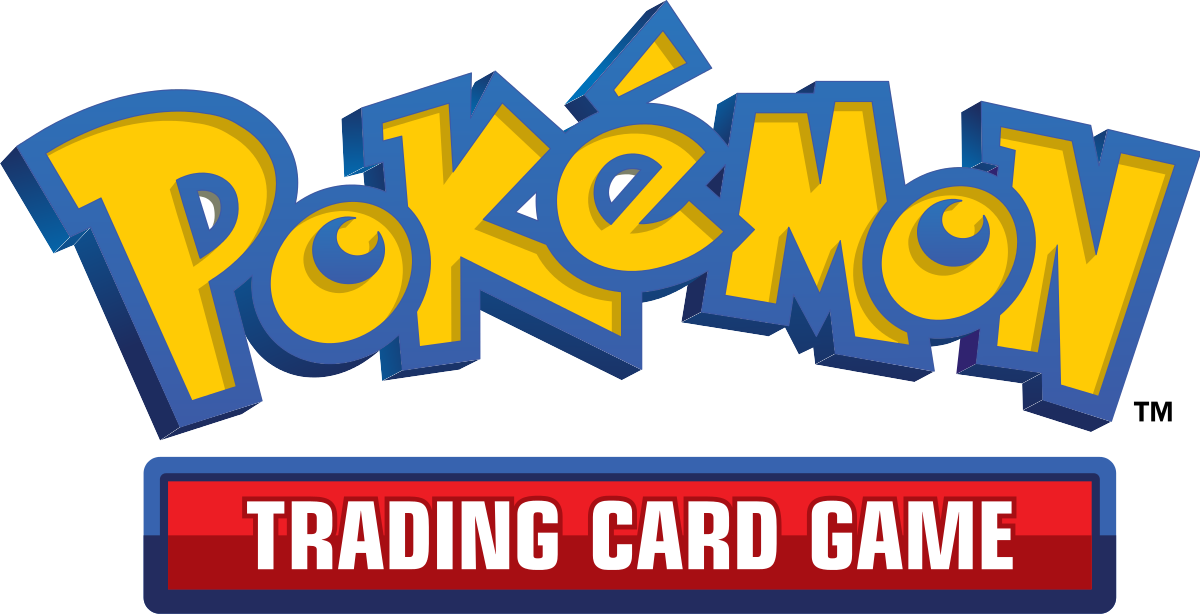
Japanese Pokémon TCG Cards: A Magical World of Collecting
Japanese Pokémon Trading Card Game (TCG) cards are a fascinating world that attracts collectors and players from around the globe. They stand out not only for their excellent quality but also for unique designs and earlier releases compared to their English counterparts. In this article, we will explore why Japanese cards are so popular, what their series are, how to determine their rarity, and why starting a collection is worth it.

Common Questions About Japanese Pokémon TCG
Are Japanese Cards Better Than English Cards?
Japanese cards are highly sought after for their quality and exclusive artwork. Many collectors appreciate the higher print quality and earlier release of new sets in Japan.
Are Japanese Pokémon cards worth collecting?
Yes! Japanese Pokémon cards are highly sought after by collectors due to their superior quality, unique artwork, and exclusivity. Cards from Japan, especially promos and limited editions, are often more valuable in the global market.
Can I Play With Japanese Cards in International Tournaments?
Yes, as long as you provide an English translation during official matches.
What Are the Rarest Japanese Pokémon Cards?

1. Pikachu Illustrator Card (1998)
Rarity: Considered the holy grail of Pokémon cards.
Why It’s Rare: Awarded to winners of the 1998 CoroCoro Comic Illustration Contest, with only 39 copies reportedly distributed.
Value: Fetches millions at auctions; the most expensive Pokémon card ever sold.
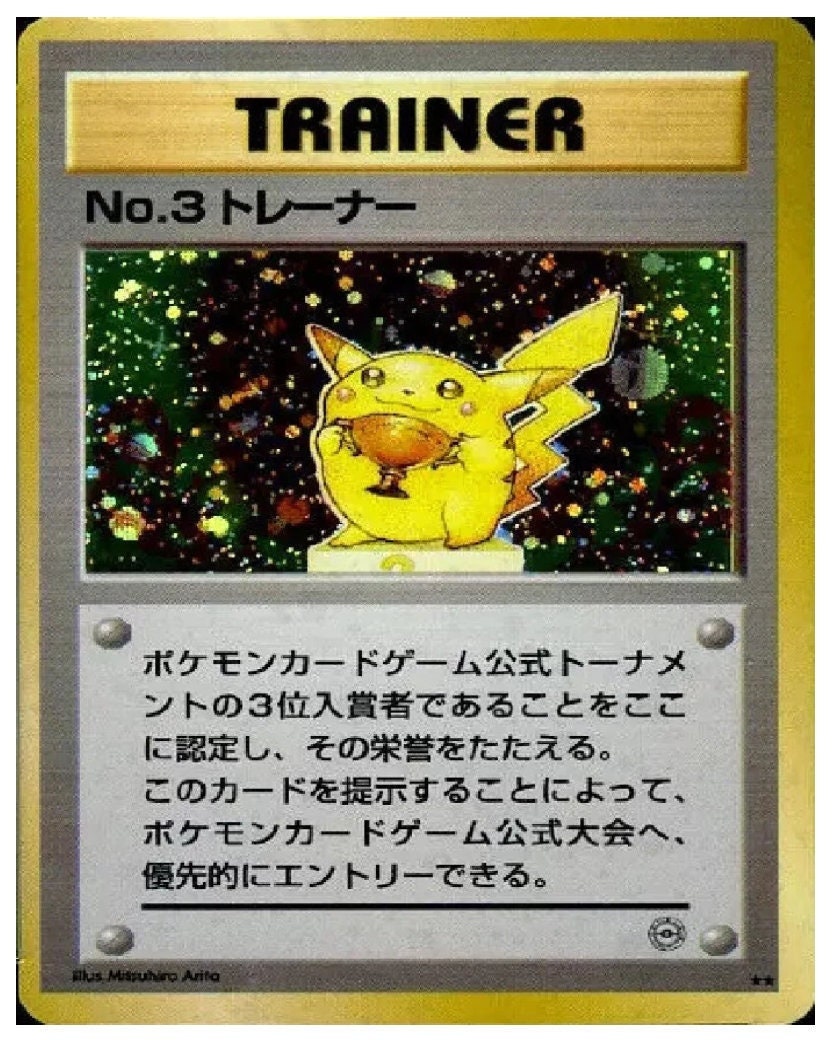
2. Trophy Pikachu Cards
Rarity: Awarded at official Pokémon Tournaments in Japan.
Why It’s Rare: Only a few were given to winners, making them highly exclusive.
Notable Versions: Gold, Silver, and Bronze Pikachu cards from early tournaments.
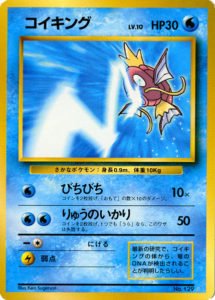
3. University Magikarp (1998)
Rarity: Distributed to participants who completed the “Tamamushi University” exam.
Why It’s Rare: Limited print run and unique backstory tied to a promotional event.
Value: Can sell for tens of thousands of dollars.

4. Masaki Promo Cards
Rarity: A series of five cards distributed in Japan during 1998, including Alakazam, Machamp, Golem, and Gengar.
Why It’s Rare: Only available through a mail-in offer that required players to trade specific cards.
Unique Feature: The cards were holographic and featured special artwork.
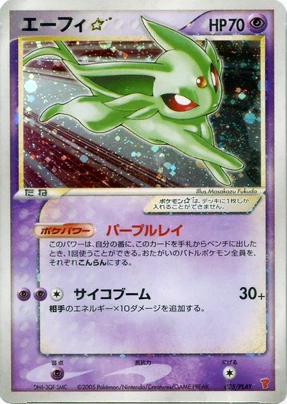
5. Shiny Espeon and Umbreon (Play Promo Cards)
Rarity: Only available to members of the Pokémon Players Club in Japan.
Why It’s Rare: Players needed to accumulate significant points to redeem these cards, limiting distribution.
Value: Highly sought after due to the combination of rarity and beloved Pokémon.

6. 1999 Tropical Mega Battle Cards
Rarity: Distributed during the Tropical Mega Battle tournaments in Hawaii, but some Japanese-exclusive versions exist.
Why It’s Rare: Limited to participants of the event, with very few copies made.
7. Japanese No. 1, No. 2, and No. 3 Trainer Cards
Rarity: Awarded to winners of Japanese Pokémon Tournaments.
Why It’s Rare: Only given to top-ranking players, making them extremely limited.
Unique Detail: Personalized with the recipient's name in some cases.
8. Gold Star Cards (Japanese Versions)
Rarity: Part of the EX Series, including fan-favorite Pokémon like Rayquaza, Charizard, and Mewtwo.
Why It’s Rare: Gold Star cards were extremely hard to pull, with only one appearing in every two booster boxes.
Unique Feature: The Pokémon appear in their shiny forms.
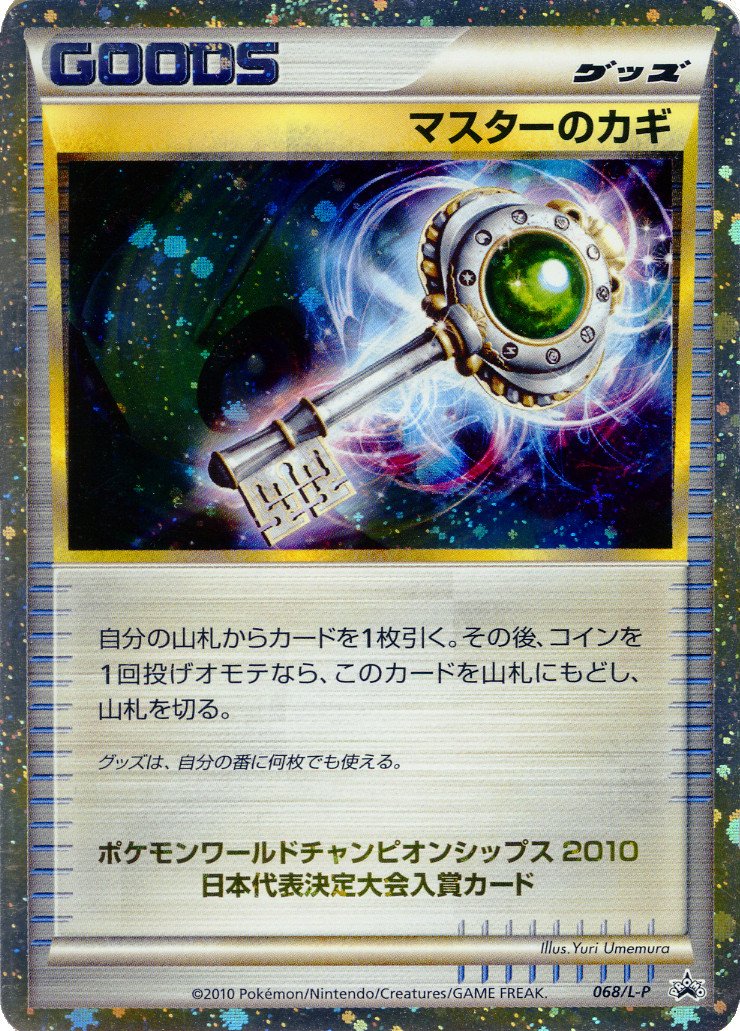
9. Master’s Key (2010)
Rarity: Given to participants of the 2010 Pokémon World Championship held in Japan.
Why It’s Rare: Extremely limited distribution, with only a few dozen made.
How to tell rarity on Japanese Pokémon Cards
Pokémon cards feature four key markings on the bottom left, each serving a specific purpose. These markings indicate whether the card can be used in battles, the expansion it belongs to, its position in the card list, and its rarity level.

Expansion Mark (Pink)
This pink symbol consists of alphanumeric characters that identify the set the card originates from. For instance, in the image provided, the card belongs to the Sword&Shield series.
S: Represents the Sword & Shield series.
3: Indicates that it is part of the third main set within the series.
a: Denotes a subset or special expansion related to the third set.
In another example, SV1V refers to a specific expansion within the Scarlet & Violet (SV) series
SV: Represents the Scarlet & Violet series.
1: Indicates that this is the first main set in the Scarlet & Violet series.
V: Refers to the specific expansion, in this case, Violet ex, which focuses on Pokémon and themes from the Violet version of the Scarlet & Violet games.
Regulation Mark (Green)
In Pokémon TCG, the D mark refers to a regulation mark introduced on Pokémon cards starting from the Sword & Shield series in Japan. It serves a specific purpose in determining which cards are legal for use in Standard Format tournaments.
If you have a card with a D mark, it may no longer be legal in current Standard tournaments, but can still be used in other formats like Expanded. As of 2024, cards marked with F, G, and H are allowed under standard play rules.
Card List Number (Yellow)
The yellow marking provides the card's position in its expansion’s list. In the example, the numerator of “028/076” represents the card’s number, while the denominator indicates the total number of unique cards in the set. High-rarity cards, such as SR (Super Rare), are excluded from the denominator, which is why these cards often exceed the total count, appearing as “080/076” or similar.
Rarity (Blue)
The blue marking indicates the card’s rarity, represented by up to three letters. Higher rarity levels typically correspond to increased value and desirability. For shiny or special cards, this is the primary detail to examine to gauge their worth.
Pokémon TCG Rarity Chart
Normal Rarity
| Rarity | Features |
|---|---|
| UR | The entire card is finished in gold, making it highly desirable and rare. |
| HR | The card features a rainbow-colored finish across its entirety. |
| SR | Cards with relief processing along the edges, adding texture and uniqueness. |
| SA | Marked as SR or HR, these cards have unique illustrations (discontinued in packs from 2023 onward). |
| RRR | Cards with relief processing. The design varies depending on whether it's Pokémon VMAX, VSTAR, or EX. |
| RR | A holographic card with reflective surfaces. |
| R | Features shiny edges and illustrations, making it stand out. |
| U | No special features like holographic shine. Slightly less common than C cards. |
| C | The base card with no special processing or finishes. |
| Mirror | The entire card has a reflective, shiny finish. In high-class decks, all cards are mirror-finished. |
| Ball Mirror | Similar to Mirror cards, but with Poké Ball designs incorporated into the shiny finish. First introduced in Dark Phantasma. |
Special Rarity
| Rarity | Features |
|---|---|
| SAR | Entirely illustrated cards. Introduced in packs from 2023 onward. |
| AR | Similar to SA and SAR, featuring full-card illustrations. |
| CSR | Cards depicting Pokémon and associated characters. Found in high-class and enhanced expansion packs. |
| CHR | Lower-tier version of CSR cards, also featuring Pokémon and related characters. |
| SSR | Shiny, alternate-color versions of SR cards. Even rarer than SR. |
| K | Depicts Pokémon in unique alternate colors. |
| A | Features a rainbow background. |
| PR | Specially processed cards with a ◆ mark next to the card name. |
| S | Cards with different-colored Pokémon. Included in sets like Shiny Star V and Ultra Shiny GX. |
| H | One of the oldest rarities, showcasing Pokémon in alternate colors. |
| TR | Trainer cards with alternate illustrations. |
| Master Ball Mirror | A rare variation of the Poké Ball Mirror rarity, featuring a Master Ball design. First appeared in Pokémon Card 151. |
| ACE | Cards from older sets like Wild Force and Cyber Judge. Includes ACE SPEC cards, introduced in the BW era. |
| PROMO | Exclusive cards given as bonuses with box purchases or at special events. Not sold commercially, making them highly collectible. |

UR (Ultra Rare)
Because the illustrations are identical to those found on SR and RRR cards, and there are no UR support cards available, it's unlikely that their prices will increase dramatically. However, as UR cards are the only high-rarity merchandise cards, they will likely be sought after by players aiming to add shine to their decks.

HR (Hyper Rare)
A special card featuring a rainbow pattern covering the entire surface. It is rare, appearing in only one out of every five boxes, and includes Pokémon and characters also designed with the rainbow pattern.
Some SA versions of HR (more details on SA later) are available, and the most popular ones, such as Umbreon VMAX, have seen their prices soar.
Additionally, HR cards were discontinued starting with the "Scarlet ex" and "Violet ex" sets, released on January 20, 2023.

SR (Super Rare)
The edges of the cards with Pokémon are relief-processed, and the design features no background, focusing solely on the depiction of the Pokémon.
While these cards are generally less expensive than SAR cards, some of the cute girl-themed cards can fetch high prices in the market.

SA (Special Art)
Some Pokémon SR and HR cards from packs released before the "VSTAR Universe" set, which launched on December 2, 2022, included special cards known as SA (Special Art).
Similar to the SAR cards introduced in the "VSTAR Universe," these cards feature full-coverage illustrations.
Many of these cards showcase stunning artwork, and while they are part of regular packs, their low inclusion rate makes them difficult to find. As a result, popular Pokémon cards from this series can fetch prices close to 400,000 yen.

RRR (Triple Rare)
This rarity was first introduced in the Sword and Shield series. Special cards featuring relief processing, such as Pokémon VMAX and Pokémon VSTAR, which are iconic symbols of the series, belong to the RRR category.

RR (Double Rare)
RR (Double Rare) cards are one level below RRR in rarity and feature a holographic effect.
Powerful cards like 'Pokémon V' and 'Pokémon EX' are typically classified as RR. Among these, cards frequently used in battles can be traded for around 1,000 yen each.

R (Rare)
Those cards are included once per pack and feature a glittery finish.
Due to their higher circulation, these cards generally don't fetch high prices. However, strong cards that are commonly used in competitive play can sometimes be traded for around 1,000 yen.

U (Uncommon)
This is a standard card with no shiny finish, similar to the common cards described below, but it has a lower inclusion rate than common cards.
Unlike C cards, it features a selection of more powerful cards, typically valued between 100 and 500 yen. However, some powerful cards can occasionally be traded for over 1,000 yen.

C (Common)
This is the most common card found in Pokémon card packs. It includes pre-evolved Pokémon and Trainer Cards.

mirror
While there is no specific rarity notation, this refers to C or U cards that are foil or glitter-processed. These cards are often included in high-class packs and enhanced expansion sets.
Additionally, in high-class decks, all the cards may feature a mirrored finish.

Monster Ball Mirror
Although there is no specific rarity indication, C and U cards are foil-processed and feature a Pokéball design across the card.
This rarity first appeared in Dark Phantasma, with about 10 of these cards in each box. In Pokémon Card 151, there is one per pack.

SAR (Special Art Rare)
This is the most common rare card found in Pokémon card packs. It includes pre-evolved Pokémon and Trainer Cards.

CSR (Character Super Rare)
This is a rare item that Pokémon fans will adore, as it features a collection of Pokémon and characters related to them, such as gym leaders and the main protagonist.
The inclusion rate is relatively high, leading to a large circulation.
However, as the packs containing CSRs are no longer in print, the prices of cards featuring illustrations of popular characters have been soaring.

CHR (Character Rare)
CHR is a lower rarity than CSR. Like CSR, it features a Pokémon and a related character together. CHR cards are more commonly included in packs than CSR cards, which results in a generally lower market price.
However, as the packs containing CHR cards are no longer in print, the prices of cards featuring illustrations of certain popular characters have been rising.

SSR (Shiny Super Rare)
This is an SR-colored card. As of July 2023, this rarity can only be found in Shiny Star V and Ultra Shiny GX.
Although the inclusion rate is not particularly low, only popular Pokémon are seeing significant price increases. The two packs containing this rarity are now out of print, which has led to increased demand.
PSA10 versions of iconic Pokémon, such as Charizard GX and Umbreon GX, are being traded for over 100,000 yen.

K (Shining Pokémon)
This card features a rare, shiny Pokémon that first appeared in Battle Region, and its name includes the word 'Shining.'
Although only one of these cards can be included in a deck, they are incredibly powerful. Among them, Shiny Greninja and Shiny Charizard are particularly popular and have been traded for over 3,000 yen.
After being re-released in VSTAR Universe a few months later, their prices have stabilized to around 1,000 yen.

A (Amazing Rare)
A special rarity found in the Legendary Beat and Shiny Star V packs. This rarity features semi-legendary, legendary, and mythical Pokémon from the game series, with a rainbow-colored background.
While there are a large number of these cards in circulation, they generally cost between 1,000 to 2,000 yen. However, popular Pokémon can be more expensive, and prices tend to rise when these cards are used in competitive play.
Since the two packs containing these cards are out of print, the prices of popular Pokémon have seen a significant increase.

PR (Prism Star)
This rarity first appeared in Ultra Sun and Ultra Moon, and is distinguished by a ◆ symbol in the card name and text area.
Since there is one in every box, they are relatively common. However, with the packs containing these PR cards now out of print, their prices may fluctuate significantly in the future.

S (different colors)
S is a rarity mark for cards featuring different colors, exclusive to Shiny Star V and Ultra Shiny Star GX.
Although each box contains multiple cards, resulting in a relatively large circulation, the packs these cards appeared in are now out of print. As a result, some popular Pokémon, such as Eevee, can sometimes be traded for around 5,000 yen.

H (Shiny Pokemon)
The cards are notable for featuring the name 'Shining' and showcasing legendary and mythical Pokémon in different colors.
These cards were exclusively included in the now out-of-print Shining Legends set, and demand from collectors is steadily increasing.

TR (Trainer's Rare)
This refers to cards with different Trainers' illustrations and shiny finishes.
Although the effects of the cards are the same, they are popular among players because they are shiny and have different illustrations. The inclusion rate is 1 to 2 cards per box, so there is a large circulation.

Master Ball Mirror
Although there is no rarity indication, the C and U cards are foil-processed and feature the Master Ball design across the card.
This rarity is higher than the Monster Ball Mirror, with one card included in each box.
While each box contains only one card, the wide variety of designs means that popular Pokémon, such as "Pikachu" and "Gengar," along with sought-after trainers like "Erika's Invitation," are becoming increasingly valuable.

ACE (Ace Spec)
Marked as 'ACE,' this rarity reappeared in 'Wild Force' and 'Cyber Judge.'
Although only one can be included in a deck, it is a powerful card and is highly sought after by players.

P (promotion card)
These cards are not included in regularly sold packs but can be obtained as event admission bonuses, box-purchase bonuses, or prizes from events, such as winning a competition.
Despite being promo cards, they hold significant demand among collectors.
Notably, prizes like Royal Mask, Charizard VMAX (HR) from the Battle event, and Exballie, randomly drawn from limited edition packs awarded to the winners of Extra Battle Day and the Rock-Paper-Scissors Tournament, are being traded for over 1,000,000 yen.
How to Start Collecting or Playing?
Starting to play or collect Pokémon TCG (Trading Card Game) can be a fun and rewarding experience. Here’s a step-by-step guide on how to begin:
1. Understand the Basics of Pokémon TCG
The Goal: In Pokémon TCG, you play as a Trainer, using a deck of Pokémon cards to battle against an opponent. The aim is to "knock out" your opponent's Pokémon and win prize cards
The Cards: The main types of cards are:
Pokémon cards: Represent the creatures you use to battle.
Energy cards: Power your Pokémon’s attacks.
Trainer cards: Help you with actions during the game.
2. Get Starter Packs or Build Your First Deck
Buy a Starter Deck: Starter decks are pre-made decks designed for beginners, often including a rulebook and playmat. You can find them at game stores, online shops, or Pokémon events. They come with 60 cards, which is the standard deck size.
Deck Building: Once you're comfortable with the game, you can start customizing your deck by adding specific Pokémon, Trainer cards, and Energy types to fit your strategy. You can buy booster packs, which contain random cards, to expand your collection.
Deck Types: Some decks focus on fast and aggressive Pokémon, while others may focus on defensive strategies or controlling the game with status effects.
3. Learn the Rules
Read the Rulebook: Your starter deck should come with a rulebook explaining the basic mechanics.
Watch Tutorials: There are many online resources, including YouTube channels and official Pokémon TCG websites, with video tutorials explaining gameplay and strategies.
Use Online Tools: Pokémon TCG Online is a free digital version of the game where you can practice and learn the rules against real players or AI. It also allows you to collect and trade cards in-game.
4. Play with Friends or at Local Events
Casual Play: Start by playing casual games with friends or other beginners to practice and get used to the flow of the game.
Join a Pokémon League: Many local game stores and online communities host Pokémon TCG leagues, tournaments, and events. These are great for meeting other players and testing your deck.
5. Start Collecting Cards
Understand Card Rarities: Cards come in various rarities, such as Common (C), Uncommon (U), Rare (R), and Ultra Rare (UR). Collecting Pokémon cards can be an exciting part of the hobby. Some players collect specific cards, set series, or rare variants.
Booster Packs and Boxes: You can buy booster packs, which contain random cards. Booster boxes contain larger quantities of packs and are often more cost-effective if you're looking to collect a specific set.
Keep Track of Your Collection: Use apps or websites to catalog your collection and track what cards you still need.
6. Join the Pokémon TCG Community
Online Communities: Platforms like Reddit, Discord, and social media groups are full of Pokémon TCG players and collectors. Join them to exchange tips, trades, and experiences.
Trading Cards: Trading is a major part of Pokémon TCG. Whether at local events or online platforms, you can trade cards to improve your deck or complete your collection.
7. Participate in Tournaments
Competitive Play: Once you’re more comfortable, consider entering tournaments. They can be local, regional, or even international competitions. Winning tournaments can earn you cool cards and prizes.
8. Keep an Eye on New Releases
Pokémon TCG regularly releases new sets, each containing new cards and mechanics. Stay up-to-date with new set releases and events to keep your collection fresh and expand your gameplay.
9. Have Fun!
Collecting and playing Pokémon TCG is a journey. Enjoy discovering new cards, building strategies, and interacting with other players.
List of newest Pokémon Card Series
2024 Pokémon Card Series (Japan)
Crimson Haze – March 22, 2024
Mask of Transformation – April 26, 2024
Night Wanderer – June 7, 2024
Stella Miracle – July 19, 2024
Starter Set Terrace Type: Stella Nymphia ex / Sawblaze ex – August 30, 2024
Paradise Dragona – September 13, 2024
Choden Breaker – October 18, 2024
Terastal Festival ex – December 6, 2024
Battle Partners – December 24, 2024
2025 Pokémon Card Series (Japan)
Starter Set ex "Marnie's Morpeko & Orbeetle ex" and "Diego's Dwebble & Metagross ex" – February 21, 2025
Heat Wave Arena – March 14, 2025
Glory of the Team Rocket – April 18, 2025
Where to Buy Pokémon Cards
Whether you're a seasoned collector or just starting your Pokémon card journey, finding the right place to purchase authentic and high-quality cards is essential. There are a variety of places to buy Pokémon cards, from local hobby shops to online stores, and many offer a wide selection of packs, rare cards, and limited editions.
For those looking for convenience and a trusted source, Wabi-Sabi Store offers a curated selection of Pokémon cards, including the latest series, promo cards, and exclusive items. We pride ourselves on providing high-quality products that collectors and players will love.
Visit Wabi-Sabi Store to explore our collection and get your hands on the latest Pokémon cards. Whether you’re looking to complete your set or find that rare card you've been searching for, we’ve got you covered!
2025 © All Rights Reserved












![CICA × RETI All-in-One Gel – Multi-Functional Skin Care for Moisturization and Refinement [Alcohol-free]](http://wabisabi-store.jp/cdn/shop/files/618MKiz910L._AC_SX679.jpg?v=1745220023&width=1)
![CICA Method Medicated Cream CI – Intensive Soothing & Acne Care with Centella & Japanese Botanicals – 100g [Alcohol-free]](http://wabisabi-store.jp/cdn/shop/files/4969133286544.jpg?v=1739431229&width=1)
![Melano CC Whitening serum 20ml [Alcohol-free]](http://wabisabi-store.jp/cdn/shop/files/61oMs0zLplL._AC_SY450.jpg?v=1704525636&width=1)
![Naturie Moisturizing Gel – Lightweight Hydration for Radiant Skin 180g [Alcohol-free]](http://wabisabi-store.jp/cdn/shop/products/Zel-z-Hato-Mugi-gel-od-NATURIE-180g-Naturie.jpg?v=1630156580&width=1)
![Ulmore High-Moisture Bath Liquid - Deeply Hydrating Formula with Ceramides and Hyaluronic Acid for Dry and Sensitive Skin (Creamy Floral Fragrance) 600ml [No Alcohol]](http://wabisabi-store.jp/cdn/shop/files/4901080092717.jpg?v=1733028473&width=1)